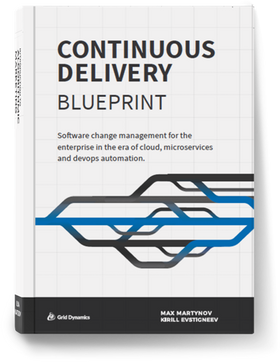Our clients
Cloud migration strategy
The cloud migration journey starts with analyzing the current application and data assets portfolio and identifying candidates for initial migration and modernization.

 Replatform Replatform |  Modernize Modernize |  Lift-and-shift Lift-and-shift |  Retain Retain | |
|---|---|---|---|---|
| What | Old applications that work well as-is. | Old applications that experience reliability issues in the datacenter. | Legacy or modern applications and services. | Legacy monolithic applications and services. |
| Technology | Not cloud-friendly or SaaS. | Not cloud-friendly. | Mixed, cloud-native, and not cloud-friendly. | Monolithic, non-cloud-native. |
| Future plans | Limited to no development plans. | Limited to no development plans. | Major development plans, innovation is required. | Major development plans, innovation is required. |
| Migration plan | Leave on-premises to keep using as SaaS, potentially lift-and-shift by VMs with the least priority. | Lift-and-shift by VMs, or lift-and-shift with deployment automation modernization. | Modernize, migrate to containers and cloud-native technology stack. | Replatform to modern microservices architecture and cloud-native technology stack. |
 Doesn’t have extraordinary security or compliance limitations to avoid the steep cost of the initial investment. Doesn’t have extraordinary security or compliance limitations to avoid the steep cost of the initial investment. |  Has high fluctuations in performance requirements during a day, week, or year, to take advantage of dynamic scalability. Has high fluctuations in performance requirements during a day, week, or year, to take advantage of dynamic scalability. |  There is a demand for active development and innovation so that it can benefit from increased speed to market. There is a demand for active development and innovation so that it can benefit from increased speed to market. |  Loosely coupled with the rest of the system to allow for higher latency between the cloud and datacenter interconnect. Loosely coupled with the rest of the system to allow for higher latency between the cloud and datacenter interconnect. |
 |  |  |  |  | |
|---|---|---|---|---|---|
| What | A modern service or application currently hosted in containers and using a cloud-native technology stack, with a small set of integrations. | A modern service or application currently hosted in containers, using a non-cloud native persistence layer (DB). | Service or application outside of containers, using non-cloud native persistence layer (DB). | A legacy service or application that uses a non-cloud native technology stack and needs heavy modernization or replatforming. | A legacy system that uses a non-cloud native technology stack and needs heavy modernization or replatforming. |
| Plan | Move to cloud k8s and test. | Replace DB with cloud-native DB, move to k8s, and test. | Migrate to containers, replace DB with cloud-native DB, deploy in the cloud, and test. | Replatform or migrate to a modern technology stack and k8s, replace DB with cloud-native DB, deploy in the cloud, and test. | Analyze and decompose into XS-L applications. |
| Timeline | 2 weeks | 4 weeks | 8 weeks | 12 weeks |
Cloud migration journey





Get to the cloud faster with Grid Dynamics accelerators








Industries
We bring more than 10 years of experience in migrating Fortune-1000 enterprises from on-premise environments to the cloud while modernizing applications from legacy monoliths to microservices architectures. We achieved a 10x speed to market and efficiency increase by implementing open-source-based cloud-native technology.

Digital transformation is accelerating in financial services companies, requiring higher enterprise agility. While security is still a concern for many, cloud has become industry accepted and the new norm. Grid Dynamics has experience working with Fortune-1000 US banks and financial services companies to move applications, data, and AI to the cloud, boosting efficiency and speed to market.

Retailers and brands have to constantly innovate to keep the best customer experience, efficient fulfillment, and accurate analytics. Grid Dynamics helped Fortune-1000 US retailers move omnichannel commerce, fulfillment, and data analytics to the cloud, while modernizing applications, moving to microservices, and adopting DevOps best practices.

Digital-native companies are often starting development in the cloud. They need high efficiency and the ability to scale quickly. Grid Dynamics’ accelerators, such as the microservices platform, test data management, analytical data platform, and AI solutions can help achieve 10x scale, speed to market, and innovation to stay ahead of the competition.
Read more



Accelerate the cloud journey with Grid Dynamics
We provide flexible engagement options to plan and execute cloud migration at the enterprise scale. While keeping the focus on application modernization, advanced analytics, AI, DevOps, and MLOps, we help companies move quickly by providing fast lift-and-shift services followed by deep modernization. Clients take advantage of our accelerators to increase their speed to market and reduce overall risk. Contact us today to start with a workshop, discovery, or PoC.
More cloud solutions
Get in touch
We'd love to hear from you. Please provide us with your preferred contact method so we can be sure to reach you.
Please follow up to email alerts if you would like to receive information related to press releases, investors relations, and regulatory filings.

























